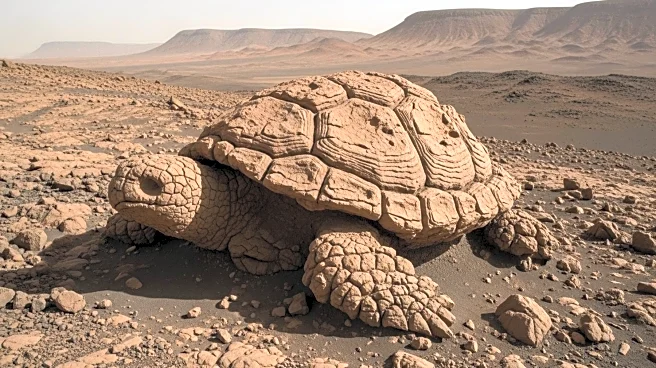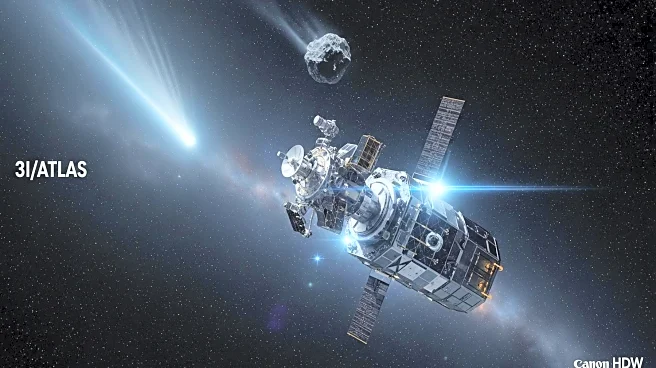What is the story about?
What's Happening?
NASA's Perseverance rover has discovered minerals in young sedimentary rocks on Mars that may indicate past microbial life. These minerals, formed by electron-transfer reactions between sediment and organic matter, could be a biosignature, although they can also form abiotically. The discovery challenges previous assumptions that signs of ancient life would be found only in older rocks, suggesting Mars may have been habitable for longer than previously thought. The findings are undergoing peer review to ensure scientific rigor.
Why It's Important?
The potential biosignature discovery is significant as it could provide evidence of past life on Mars, a key question in astrobiology. If confirmed, it would suggest that Mars had conditions suitable for life more recently in its history than previously believed. This finding could reshape our understanding of the planet's habitability and guide future exploration missions. The discovery also highlights the importance of rigorous scientific validation in astrobiological research.
What's Next?
Further investigation is needed to confirm whether the minerals are biological in origin. NASA plans to continue analyzing the rocks and may propose a Mars sample return mission to bring them back to Earth for detailed study. However, budget constraints could impact the feasibility of such missions. The scientific community will continue to assess the data using established frameworks to determine the likelihood of past life on Mars.
AI Generated Content
Do you find this article useful?
















